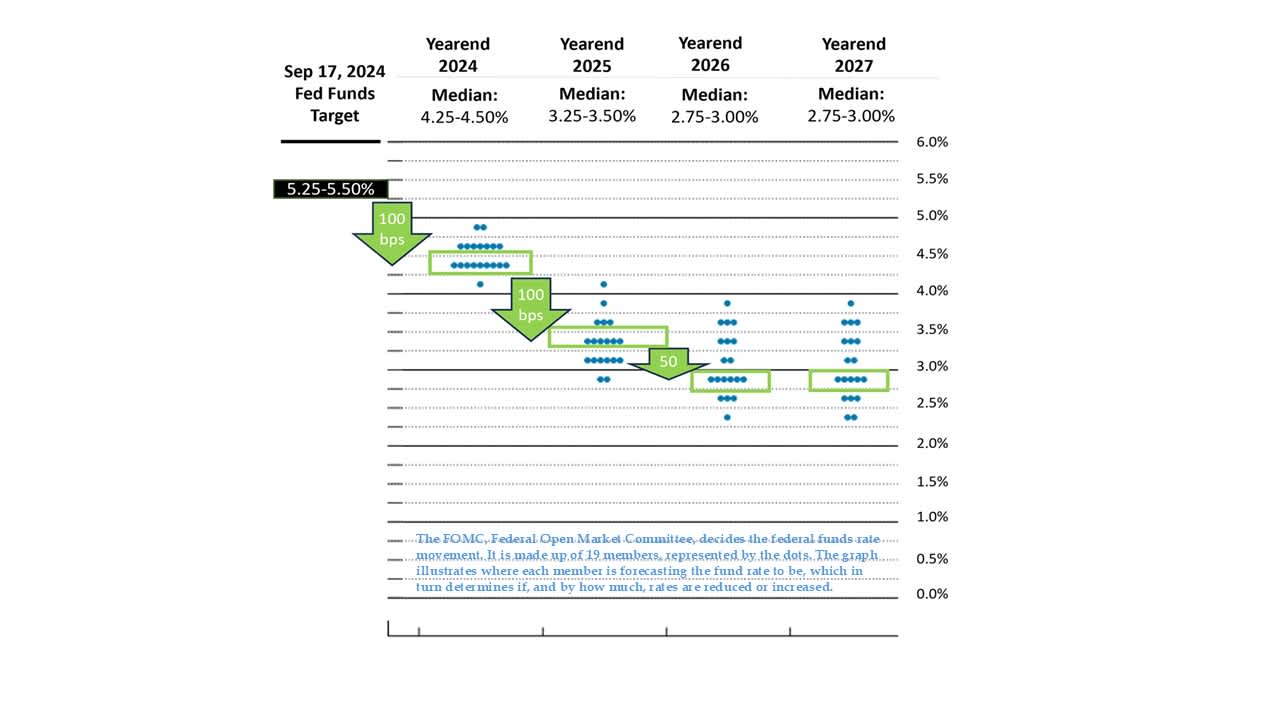As expected, the Federal Reserve cut its benchmark interest rate. This marks the first reduction in four years, aiming to ease borrowing costs for inflation-weary consumers. While many expected a 0.25% cut, the Federal Reserve went with a bolder 0.50% reduction. This marks a turning point in its fight against inflation.
Reasons for the Rate Cut - Economic Concerns and Outlook
The Fed aims to prevent the U.S. economy from stalling. Recent economic indicators indicate a slowdown in economic growth. One concern has been avoiding a recession. The half-point move signals that the Fed is acting aggressively to keep the U.S. economy from stalling, given that historically most rate cuts are 0.25 percentage points. Prior to the decision, some economists had urged the Fed to make a bolder reduction, given signs of weakness in the labor market and a slowing economy.
New Range
The federal funds rate is now 4.75% to 5%. The previous range of 5.25% to 5.5% was the highest in 23 years.
Housing Market
Mortgage rates have already eased in anticipation of the Fed's rate cut and could continue to see further reductions. But the Fed's rate decisions are just part of the factors that influence home loan rates, which are also impacted by economic trends such as the labor market and housing demand.
Lower mortgage rates could help the housing market inventory, which has been affected by the low rates many homeowners locked in during the pandemic, when people could refinance into 30-year fixed mortgages with rates of about 3%. The housing supply remains low; however, it is anticipated that, as rates come down, more potential sellers will start to emerge, as the cost to finance a new home purchase is reduced.
But, Powell cautioned, the housing market is also impacted by issues beyond the Fed's control, including a lack of housing supply. "And this is not something that the Fed can really fix. But there is hope that as we normalize rates, you'll see the housing market normalized.”
Job Market
Signs of weakness in the job market influenced the decision. The unemployment rate of 4.2% is historically low and projected to be 4.4% by year end. The labor market is solid, but cooling. Hiring is moderating. Job growth was lower than initially reported. The Fed aims to support continued labor market growth with its policy recalibration.
Inflation
Progress is being made, but the Fed remains vigilant in its efforts. The Fed’s target is 2% inflation. Inflation slowed to 2.5% in August, and the Fed is encouraged by the progress of cooling inflation and expects to reach its 2% target eventually. However, it’s not "mission accomplished" yet on inflation control, as the Fed continues to manage inflation.
Potential Impact on the Economy
Besides lower mortgage rates, making home ownership more affordable, the lower rates will also make it easier for consumers to manage their debt, making loans cheaper. Borrowers should begin to see relief with rates potentially lowering on auto loans, credit cards and personal loans.
Forecast for Future Rate Cuts
Even more important than the recent cut is what the Fed does in the months ahead as it pivots away from battling inflation to revving up the nation's economic engines in a bid to stave off a downturn.
Economists are forecasting that this current rate cut will mark the first in a series of reductions this year and into 2025, with many analysts expecting the Fed to also cut its benchmark rate at its November and December meetings. What is unknown is whether the Fed will opt for another large cut at one of those meetings or cut by 0.25 percentage points at both.
2024: The Fed is projecting its members are looking at a median 2024 federal funds rate at 4.4%,
2025: FOMC forecast that its members are projecting the median federal funds rate will decline to 3.4% by the end of 2025. (see graph)
Conclusion and Key Takeaways
The Federal Reserve's decision to lower interest rates is a significant step in addressing current economic challenges. Economists are optimistic about the possibility of a soft landing. The Fed’s aim is to prevent a recession and support economic growth, with its policy adjustments. The future path of monetary policy will depend on various factors, including economic data, the labor market, global conditions and inflation expectations. These forecasted additional rate cuts should set the stage for more relief on borrowing costs for consumers and businesses.




